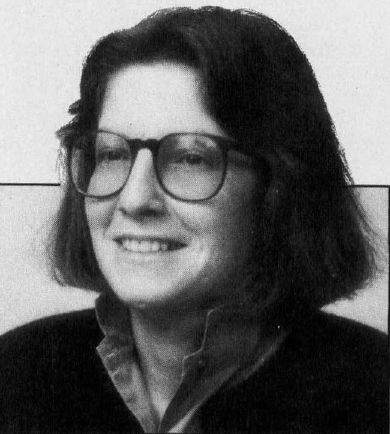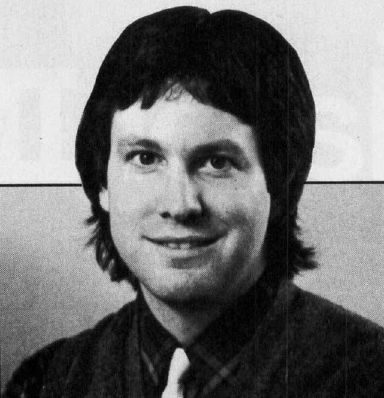The Educational Software Explosion
Kathy Yakal, Editorial Assistant
Even if you didn't buy your home computer as an educational tool, you've probably learned a lot from your interaction with it. Games, home productivity packages, and other computer programs can teach, but recently there's been a proliferation of dedicated educational software. Software developers and publishers are vying for top positions in educational software, potentially a billion-dollar business.
Experts have said that it was pretty easy to predict who the first 6 percent of computer owners would be, says Marilyn Rosenblum, vice president for product development at CBS Software. They're the same people who have expensive hi-fi systems and Sony Walkmans, people who like new technology.
"The important issue for us and for the future of this industry is who the next 6 percent will be," she says. "The thing that's going to determine that is how truly useful we can make computers."
Software publishing firms have been scrambling over the last few years to figure out how they can influence the next 6 percent to buy. The bets right now are on education. "There's been a tremendous proliferation of manufacturers into the educational software market," says Jordan Levy, vice president of marketing at Software Distribution Services.
Levy and many others in the industry who attended last summer's Consumer Electronics Show are overwhelmed by the number of publishers who have either entered the market or added educational software to their already existing line. Future Computing predicts that consumers and schools will purchase 6,787,000 units of educational software this year.
Bringing School Home
"I think you can trace the recent popularity of educational software to penetration of the home computer," says Richard Khaleel, president of Scholastic, Inc.'s Software Group. Game software was popular initially, he says, due to the popularity of the VCS. "And with the penetration of the personal computer into the business market, we saw the explosion of business software."
Further, home computer sales took off partly because children were using them in schools. "The use of computers in schools is probably one of the main reasons for the popularity of home computers," says Khaleel. Market analysts at the Minnesota Educational Computing Consortium (MECC) agree. And as more school districts make computer literacy an important part of the daily curriculum, children are exposed in ever-increasing numbers.
Not Just A Shooting Star
In the rush to find uses for this newly installed base of home computers, a lot of potential applications and inappropriate game ideas have come and gone. With them have gone a lot of software companies. But the concept of education is no fad. "Everyone latched onto education because education doesn't change that much," says Marilyn Rosenblum. "The need to teach children to read and write well will always exist."

Having worked in educational publishing for a number of years before coming to CBS, Rosenblum's perspective of this "explosion" is different. In educational book publishing, it wasn't so much an explosion as an ongoing event. Educational publishers began to add microcomputer software to their existing lines of books and audiovisual materials.
"What we're seeing here is that a lot of the stuff that's been used in the schools is perfectly appropriate for the home," she says. "A lot of the explosion is just recognizing a new market."
Pulling Away From The Pack
Jordan Levy thinks that many software companies sang a swan song at last summer's Consumer Electronics Show. "There will be a lot of people who won't be at the next CES," he says. "A lot of people are going to fall by the wayside, mostly entertainment."
The same thing is bound to happen with educational software over the next few years, say software publishers. But in 1989, consumers will buy about five times as much educational software as they're buying this year, says Future Computing. They predict that 35,072,000 units will be sold in that year.
Whose name is going to be on those packages? Those companies that have experience working with children, says Scholastic's Richard Khaleel. "People who have experience knowing how people learn have the best chance of creating software that is not really state of the art, but state of the mind," he says. "No new software publisher that does not have a consumer franchise in another market has been able to spend the kind of money yet to be able to establish a basis for consumer trust."
"It's very important for people who know children, who have traditionally been selling educational materials to children, to get into the business," says Weekly Reader Software Manager Fritz Luecke. "You're going to find fewer unknowns entering the market," he says.
Though parents may feel comforted by familiar names, market analysts at MECC predict that the competitive situation in the educational software market will eliminate those without educational strength and technical skill, as well as adequate marketing ability. "The next 18 months will hold some very hard lessons for those publishers who think the educational buyer is an easy sell," says MECC's Ron Barnes.
No Fun
In all of the brouhaha over which educational software publishers will emerge as leaders, there's a basic problem that everyone's trying to solve: Who deems a program educational? How do you decide when the educational benefits balance the enjoyment?
The argument seems to focus on just how much emphasis there should be on the entertainment aspects of an educational program, if any. There aren't any real rules yet, though educators try to quantify and set standards, and software designers and publishers try to develop formats that they hope will please parents, teachers, and students.
Those formats vary tremendously. "My belief is that educational software should manifest itself in some kind of discernible change in behavior, like grades," says Thomas Garsh, president of American Educational Computer, Inc. "You don't get through high school by being a good games player or having superior cognitive skills. You get through high school by having good grades. And you do not get accepted into college with superior kinds of thinking skills. You get into college by passing the SAT and having good high school grades.

"So what we've done is almost totally related our software to curriculum, by grade and subject," he says. "We've given up a few whistles and bangs, which may initially be a disadvantage because it doesn't look as flashy, but the subject is there. I'm not defending that. I'm just saying that is reality. That's our position. In this rush to the market, I don't see many companies taking that position."
Pupils Of Pac-Man ?
Software developer Tom Snyder says it's too early to judge, that it's dangerous to impose restrictions or define too concretely right now. "Even Pac-Man would be educational if you could freeze the action," he says.
"If you freeze Pac-Man or any other game, a couple of things happen," he says. "You get to use your head instead of just knee-jerk reactions. You start verbalizing to yourself what the alternatives are and formalizing them a bit instead of having them remain in sort of an intuitive, physical reaction.
"Beyond that, it really opens the experience up to more than one person. If you slow it down, everyone gathers around and you get five people talking to each other about what a decent strategy might be, and introducing the whole social element into it. That kind of interaction multiplies the learning instantly."

Keeping The Scales Steady
Somewhere between those two opposing viewpoints lie hundreds of software styles, with varying degrees of entertainment and learning. MECC Deputy Executive Director Ron Barnes contends that the learning objective of any piece of software should come first, with the game aspects then designed to increase the child's motivation to learn. Often, he says, educational software is developed the other way around.
DLM Teaching Resources publishes software which is designed to supplement curriculum as first priority. But, they say, what makes their software sell to both schools and homes is that it does not ignore the element of fun. "I think that what software producers are looking for is a correct combination of ingredients to combine into their instructional courses, to keep the interest and focus," says Jim Hafer, product evaluation supervisor for MicroD.
"There seems to be a bit of a gray line there," he says. "Some have a theory that seems to be working, and that is to make education fun. But there's only so much that can be learned from a simple game as opposed to an in-depth program."
Richard Khaleel believes that we will see more segmentation between software that makes learning fun and software that is just drill and practice. "It all depends on the age," he says. "In grade school, homework is fun. It's only when things outside of school get more important that schoolwork competes with other interests. There's always room for both."
Pinning Down The Beast
In the meantime, educators and parents puzzle over how to decide. Not just on what kind of software or computer, but something more basic: whether or not the microcomputer can be used effectively as a teaching tool.
And they can be fooled, says Tom Snyder. "There is an erroneous promise, an implication that you're going to be able to do quantifiable things with it, testing how the education is," he says. "Therefore, it's excited educators and educational consultants who say finally, we can start pinning down this educational beast in general.